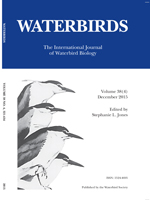This paper examines the reasons behind the large population explosion of the Herring Gull (Larus argentatus) in Great Britain, which started about 1900, continued for 60–70 years and was then followed by a decline in numbers. The increase has often been associated with food obtained at landfills, but it is better explained by other causes because such sites were not used for feeding until the increase had been in progress for 50 years and for less than 20 years before gull numbers started to decline. Further, the flock and frenzy method of feeding used by Herring Gulls at landfills is not well adapted for the successful exploitation of this food source, and the frequency of use has often been exaggerated. The historic increase in Herring Gulls starting in about 1900 should be attributed to protection and then food acquired from the marine environment, including fishing offal, and increased feeding on agricultural land. Culling has contributed more to the recent decline of the population than has been previously assessed because of secrecy and lack of detail about many such events. Feeding at landfills may have been detrimental to the Herring Gull population owing to increased mortality from botulism acquired there. It is concluded that culling and botulism both contributed appreciably to the end of the population explosion that occurred around 1970, and to the subsequent decline of the Herring Gull in Great Britain. The increase and continued spread of Herring Gulls nesting in urban areas in Great Britain cannot be explained by food obtained within the towns. Observations that, in some areas, most of these gulls rarely fed at landfill sites, and so avoided botulism, may account for their continued increase in urban areas.
How to translate text using browser tools
1 December 2015
Re-Evaluation of the Role of Landfills and Culling in the Historic Changes in the Herring Gull (Larus argentatus) Population in Great Britain
John C. Coulson





